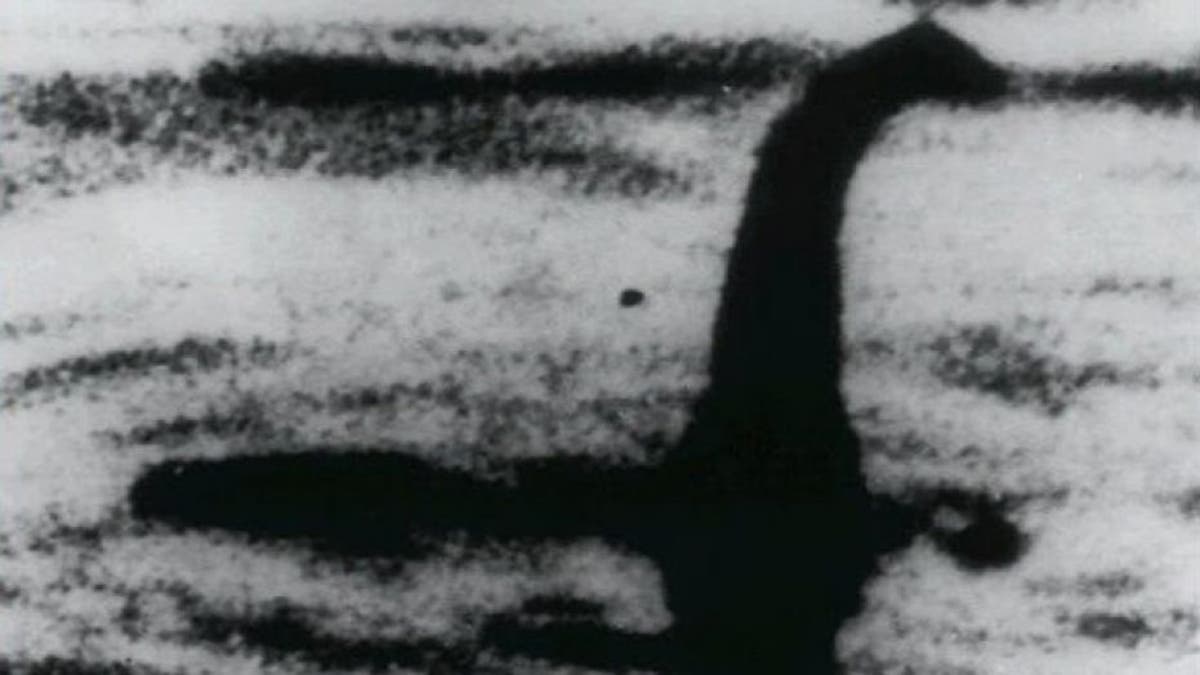
FILE -This is an undated file photo of a shadowy shape that some people say is a photo of the Loch Ness monster in Scotland. For hundreds of years, visitors to Scotland's Loch Ness have described seeing a monster that some believe lives in the depths. Now the legend of "Nessie" may have no place to hide. Researchers will travel there next month to take samples of the murky waters and use DNA tests to determine what species live there. (AP Photo, File)
Scottish officials have a plan ready if the Loch Ness Monster is ever caught.
Officials drew up a set of guidelines on how to protect the new species - including releasing it back into its watery home.
The "partly serious, partly fun" code of practice was written in 2001 by Scottish Natural Heritage, which is funded by the Scottish government.
SNH said it will "dust off" the plan and put it into action should the fabled beast be discovered, reports the BBC.
It says officials should take a DNA sample from the monster so scientists can study the creature.
Then it should be released back into the Loch with measures put in place to make sure it is not disturbed - as it would be an extremely rare species needing conservation.
SNH, which promotes Scottish wildlife and natural habitats, said the 17-year-old code of practice remained relevant today.
The organization's Nick Halfhide said: "There was a lot of activity on the loch at the time about Nessie.
"So, partly serious and partly for a bit of fun, we drew up a contingency plan about how we would help Nessie if and when she was found.
"Some of the lessons we learned then have been relevant when we have reintroduced species like sea eagles, and were used when, a couple of years ago, four new species were found in the sea off the west coast."
He added the plan would need to be updated when Nessie is discovered, and local communities and businesses on the shores of Loch Ness would be consulted.
The discovery would lead to a boom in tourism to the Loch, which already attracts 400,000 visitors a year from around the world because of the legend.
Tales of a monster go back nearly 1,500 years to when Irish missionary St. Columba is said to have encountered a beast in the River Ness in 565AD.
More recently there have been numerous sightings and pictures - some of which turned out to be faked but others remain unexplained.
The creature's appearance has been described as resembling a plesiosaur, an ancient sea monster that died out with the dinosaurs.
Earlier this year an international team of scientists gathered environmental DNA from Loch Ness for analysis.
The study will aim to confirm what species live there - including possibly any unknown animals that might be lurking in the 754ft depths.
Last month First Minister Nicola Sturgeon insisted the Loch Ness Monster exists in an interview with ITV's Good Morning Britain.
Over the years various efforts have tried and failed to find the beast.
In 1987 a £1million ($1.3 million) exploration called Operation Deepscan used a fleet of 24 boats which used sonar equipment to trawled 23-mile long lake.
Nessie must have been hiding because the team came back with nothing.
Steve Feltham is recognized by the Guinness Book of Records for the longest continuous Nessie-hunting vigil after moving to Loch Ness from Dorset 27 years ago.
He has not seen it yet, but there are ten reported sighting a year on average.
In November nine-year-old Sam Knight believed he snapped the monster's fin breaking the surface during a cruise with mum Jo.
And last June Australian tourists Peter Jackson and Phillippa Wearne caught a serpentine object on camera while driving along the shore.
This story originally appeared in The Sun.
